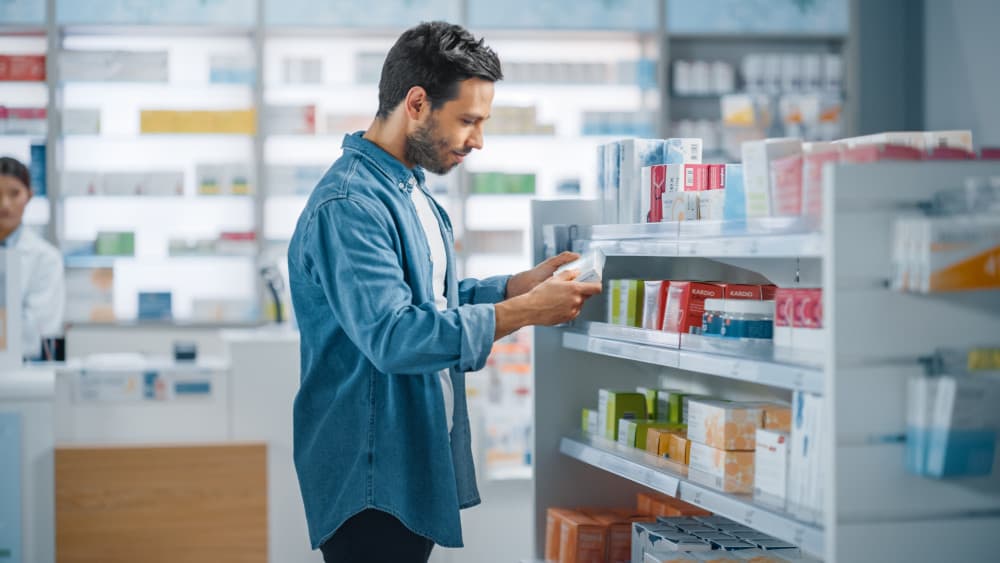Curative Pharmacy: Reduce Drug Costs with Preventive Care


8 Minutes

Team Curative

Jul 11, 2023
If you’ve ever picked up a prescription drug at the pharmacy, you know how expensive medications in the United States can be. In March 2023, over one-third of Americans reported leaving medication at the pharmacy, unable to fill it due to cost.
To many of us, it’s unsurprising that pharmacy costs are the biggest driver for increased health care costs. Americans regularly pay more for prescription drugs than those in comparable countries; 2.56 times as much, to be exact. It’s no wonder that 73 percent of Americans support imposing government limits on how much pharmaceutical companies are allowed to charge for drugs such as insulin, cancer medications, and antidepressants.
Yet, despite this widespread support, year-over-year growth of prescription drug costs doesn’t seem to be slowing down any time soon. From January to July 2022 — just seven months — the average price increase for prescription medications jumped from $150 per drug to $250. Drugmakers exceeded the already astounding $200,000 new drug median price of 2022, coming in at $222,003 for the full year.
When prescription drugs are too expensive for people to afford, they can’t take their medication as prescribed by a health care professional, and their overall health suffers. Engagement in preventive care strategies also goes down, leading to further health consequences that can be detrimental in the long run.
If you're an employer seeking to support the health of your employees, you have a direct role in influencing the cost of their prescription medication. Unreasonably high costs for prescription drugs don’t just impact your employees — their effects also extend to your business. Employers have a duty to their employees to ensure they can access the life-saving medicines they need without breaking the bank. One way employers can do so is by offering a health plan that understands the burdens associated with expensive prescriptions and provides solutions that revolve around preventive health care.

The true cost of unaffordable, inaccessible prescription medications
Nearly every American has had to take a prescription medicine at some point in their lives. Considering over 70 percent of physician office visits result in prescription drug therapy, it makes sense that seven in ten Americans take at least one prescription medication daily. Yet, that doesn’t mean patients are able to take those medications as prescribed.
High prescription drug prices contribute to medication nonadherence, which occurs when patients don’t take their medications as prescribed. The most common barrier to adherence is cost.
Medication nonadherence is a serious problem that can have dire consequences. About 125,000 preventable deaths per year in the US result from medication nonadherence. Moreover, for people with chronic illnesses, avoiding taking medication due to high prices can actually lead to even higher medical costs, as more expensive treatment may be needed that prescription drugs would have otherwise managed. These avoidable treatments cost Americans an extra $300 billion every year. Thus, patients are forced to live with worse health outcomes and higher bills that could have been avoided with access to affordable, preventive health care.

Improve access to preventive health care and lower costs with Curative
The rising costs of prescription drugs are a major concern for employers. 99 percent of today’s employers are concerned about whether or not their employees will be able to afford their medications. However, there are strategies employers can adopt to help mitigate the effects of soaring prescription prices.
At Curative, we want members to love using their plan and engage in preventive care practices, including when they need to pick up prescription medicine. That’s why we’ve developed Curative’s pharmacy benefits, so all members can access the medications they need without worrying about the price.
Curative’s comprehensive pharmacy solution allows members to easily:
Find out if a medication is covered, including generic options
Discover what level of coverage is available and what the exact out-of-pocket cost would be
Receive over-the-counter medications and medical devices
When members receive a prescription, they can reference our preferred drug list (or formulary) to see if the medication is covered. Curative’s pharmacy benefit is divided into three tiers that help determine what an individual’s out-of-pocket cost may be:
Tier 1: $0 copay (preferred drugs)
Tier 2: $50 copay (non-preferred drugs)
Tier 3: $250 copay (non-preferred drugs)
Notably, 97 percent of the medications covered by Curative’s pharmacy benefits are in tier one — meaning the cost of nearly all medications available are completely covered. There is a preferred drug in Tier 1 to treat almost every condition so members’ out-of-pocket cost stays as low as possible. Members can also work with their provider to find a medication that will work best at an affordable, transparent price. If this sounds daunting, don’t worry — our Curative Care Navigators can help.
In addition to in-network pharmacies, such as H-E-B in Texas, we developed our own in-house Curative Pharmacy, which allows as-soon-as-same-day delivery in select geographies. We are quickly expanding so that more employees can utilize this unique service. Once a prescription is ordered, members benefit from two-way text capabilities to receive status updates, fast at-home delivery in eco-friendly packaging, and customer service surveys to give us feedback on how the Curative Pharmacy is working for them.
We’ve made our pharmacy simple for three core reasons: to increase compliance, to lower costs for your employees, and to encourage members to engage in preventive care practices. As a result, Curative lets your employees get back to focusing on health care — not health costs. We believe that creating a healthier tomorrow starts with investing in ourselves today, which is why we embrace coverage for preventive health care services and medications that have the power to help your employees reach their health goals.
About Curative
Curative is a health plan that employees and employers will love. Our plan focuses on affordability, engagement, and simplicity, so people feel confident getting the care they need, when they need it. Imagine—a health plan that actually delivers better health.
Affordability
People shouldn’t avoid doctor visits out of fear of surprise medical bills. After completing a Baseline Visit in the first 120 days of joining Curative, one monthly premium will enable:
$0 copays
$0 out-of-pocket fees
$0 preferred prescriptions
$0 deductibles for in-network care.
Engagement
Curative builds engagement with employees from day one by facilitating trusted relationships with a Baseline Visit and Care Navigator. Members will complete a Baseline Visit within 120 days of plan effective date to create an individualized, preventive care plan with a Curative Care Navigator to reach their health and wellness goals. We also ensure members are connected to our large and inclusive provider network.
Simplicity
Curative makes care management virtually stress-free. The Curative Pharmacy has a partnership with a national network of pharmacies and even offers same-day delivery. Members can access virtual urgent care in partnership with NormanMD in less than 10 minutes via messaging, audio, or video chat.
No copays. No deductibles. No...really. Curative is changing the way we view health insurance with a health plan that actually delivers health.
** Patients experiencing a medical emergency should call 911 (or the local emergency number) immediately.
For more information on how the Curative Pharmacy’s focus on preventive health care can help your employees save on their prescription medications, visit us here.
To see all disclaimers, please view here.
References
8 reasons patients don’t take their medications. (22 Feb 2023). American Medical Association. https://www.ama-assn.org/delivering-care/patient-support-advocacy/8-reasons-patients-dont-take-their-medications
Beasley, D. (5 Jan 2023). U.S. new drug price exceeds $200,000 median in 2022. Reuters. https://www.reuters.com/business/healthcare-pharmaceuticals/us-new-drug-price-exceeds-200000-median-2022-2023-01-05/
Bosworth, A., et al. (30 Sept 2022). Price increases for prescription drugs, 2016-2022. Office of the Assistant Secretary for Planning and Evaluation. https://aspe.hhs.gov/reports/prescription-drug-price-increases
Sanders, L., and K. Frankovic. (10 Mar 2023). More than one-third of Americans have not filled a prescription because of its cost. YouGov. https://today.yougov.com/topics/health/articles-reports/2023/03/10/americans-have-not-filled-prescription-price-poll
Gallant, A. (11 Jan 2023). A growing number of Americans report taking prescription medications daily. CivicScience. https://civicscience.com/a-growing-number-of-americans-report-taking-prescription-medications-daily/
Leonhardt, M. (27 Feb 2020). Americans are skipping medically necessary prescriptions because of the cost. CNBC. https://www.cnbc.com/2020/02/26/people-skipping-medically-necessary-drugs-because-they-cost-too-much.html
Rising prescription drug costs a concern for employers. (25 Aug 2022). PharmExec. https://www.pharmexec.com/view/rising-prescription-drug-costs-concern-employers












